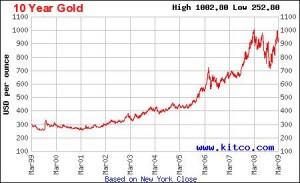Welcome to the March 22, 2009 edition of Onemint – Economy and your Finances.
Destroy Debt presents How to Organize Your Coupons posted at Destroy Debt.
Deposit Accounts presents Wealth Building Basics posted at Deposit Accounts.
Rick Adams presents Trading in the Forex Market for Beginners posted at Forex Trading.
Cody Butler presents How Do Mutual Funds work? posted at Investment-For-Beginners Blog, saying, “Article on the basics of Mutual Funds, what they are and how they work.”
Mr Wall Street presents Wall Street and Main Street are the Same posted at Mr Wall Street.
Endowments presents Endowment Life Insurance Policy UK Traded Endowments posted at Endowment Policy, saying, “How to use traded endowments and earn on them ?”
MoneyNing presents The Latte Factor and Becoming a Millionaire posted at Money Ning, saying, “Stick to thinking about how much you can save, not necessarily how much you are spending.”
Destroy Debt presents Get Out of Debt Tips posted at Destroy Debt.
CreditCardAssist.com presents How to Choose the Right Credit Card For You posted at Credit Card Assist.
Debt Freedom Fighter presents Is Obtaining a Gold Credit Card a Good Idea? posted at Discover Debt Freedom!.
Savings Toolbox presents Money Saving Tips from the Grocer posted at Savings Toolbox.
Debt
Sam presents Credit Card Debt. Get Out of Debt and Take Back Your Power $$$$ posted at Surfer Sam and Friends
Silicon Valley Blogger presents Best Cash Back Credit Cards: Your Rewards For Spending posted at The Digerati Life
PFCreditCards presents Changing Your Discover Card’s Payment Due Date posted at PF Credit Cards, saying, “Change the due date can be a powerful and easy way to organize your finances”
ChristianPF presents Would you walk away from your mortgage? posted at Money in the Bible | Christian Personal Finance Blog, saying, “If your home value dropped below what you owed, would you walk away?”
Greg Keene presents How much is a trillion dollars? posted at Managing Money God’s Way.
Economics
VC presents Understanding Credit Spreads posted at The Penny Daily, saying, “A description of credit spreads and how they relate to you and the economy”
David presents The Effects of Inflation on Your Money posted at Personal Finance Ology
Brian McKay presents Federal Reserve Leaves Rates Low posted at MonitorBankRates.com, saying, “The Federal Open Market Committee decided to leave the Fed Funds rate at historic lows of 0% to .25%.”
Investments
Insurance Toolbox presents A Comparison of No-Risk Investment Options posted at Fine-Tuned Finances.
Joshua Dorkin presents The Asset Protection Misconception: Why Insurance Alone Isn’t Enough posted at Real Estate Investing For Real.
Investing School presents Zecco Review posted at Investing School, saying, “Zecco may have changed their free trades policy but it’s still one of most popular stock brokers.”
Patrick @ Cash Money Life presents Pertuity Direct Peer to Peer Lending Review posted at Cash Money Life,
Personal Finance
Lisa presents Saving Money with Credit Cards posted at The Budgeting Blog, saying, “advice on how to save money with credit cards”
Mr Credit Card presents Cash Back Credit Card Guide posted at Ask Mr Credit Card’s Blog.
PFCreditCards presents Why I Still Get My Bills and Credit Card Statements in Paper posted at PF Credit Cards, saying, “I am a computer geek who love new technologies but I still love my paper statements.”
Abigail Perry presents Emergency fund vs debt — the eternal debate posted at i pick up pennies, saying, “Everyone’s worried about the economy and the shrinking job market. Some say we should increase our emergency funds to 8-12 months’ expenses. But what about those of us with debt? How do you balance potential danger in the future with actual debt in the present?”
Rhiana presents Cut out Three! – March 2009 posted at A Frugal Life – Just the two of us.
Ishan Bansal presents 10 Tips to Reduce Car Expenses posted at Save Few Bucks,
KCLau presents Save money the stupid way posted at KCLau’s Money Tips, saying, “Simple ways to save money”
Ian Mackie presents 5 Factors That Determine The Cost of Long Term Care Insurance | Long Term Care Insurance Blog posted at Long Term Care Insurance Blog
Darwin presents Mortgage Rates Dropping to Record Low – Time to Refinance? posted at Darwin’s Finance, saying, “With mortgage rates touching an all-time low again, this article assesses the driving forces behind these rate movements and describes how to capitalize on the situation.”
The Smarter Wallet presents Kiva Review: Micro Lending With A Global Reach posted at The Smarter Wallet
Stocks
VC presents What is Shorting Stocks? posted at The Penny Daily, saying, “An explanation of how shorting stocks can earn you money in a bear market.”
Marcus presents Buying Stocks For Beginners – Back To Basics posted at Stock Market Investing For Beginners, saying, “There’s doom and gloom everywhere. Investors and traders all rushed for the exits months ago. It’s a tough time if you’re just starting out in the stock market. In this post I offer some reminders about what it means to be an investor. I talk about buying the business and not the stock, buying for the long term – all the basic stuff. We all know it, but sometimes we need a gentle reminder.”
That concludes this edition. Submit your blog article to the next edition of OneMint – Economy and Your Finances using our carnival submission form. Past posts and future hosts can be found on our blog carnival index page.

